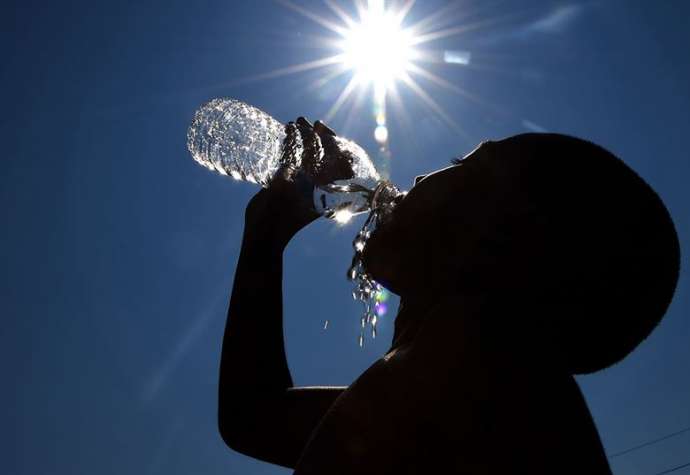Časoris is an online newspaper aimed at children. Each week we’ll take an article and post it here as a Slovene-English dual text.
Vročinski rekord leta 2020
Heat record in 2020
Written by Romana Dobnikar Šeruga, translated by JL Flanner & G Translate
Leto 2020 je bilo najtoplejše, odkar redno merijo temperaturo planeta.
The year 2020 was the warmest since the planet’s temperature has been regularly measured.
Po izračunih Nase je lansko leto za manj kot desetinko stopinje Celzija prehitelo dosedanjega rekorderja, leto 2016. V Evropi je bilo lansko leto najtoplejši doslej, kažejo podatki evropskega programa Copernicus.
According to NASA calculations, last year surpassed the previous record by less than a tenth of a degree Celsius, 2016. Last year in Europe was the warmest so far, according to data from the European Copernicus program.
A naj bo leto 2020 novi nosilec tega neslavnega rekorda ali ne, zagotovo si ga bomo zapomnili po visokih temperaturah, močnih orkanih in divjih požarih.
But whether 2020 is the new bearer of this infamous record or not, we will surely remember it for its high temperatures, strong hurricanes and wildfires.
V letu 2020 je bilo veliko gozdnih požarov. Največji so divjali v Avstraliji in Kaliforniji.
In 2020, there were many forest fires. The largest were out of control in Australia and California.
Ledeniki se krčijo, večni led se topi. Če bo šlo tako naprej, bodo polarni medvedi do konca stoletja izumrli.
Glaciers are shrinking, polar ice is melting. If this continues, polar bears will become extinct by the end of the century.
Ti podatki tudi potrjujejo zaskrbljujoče dejstvo, da se naš planet iz leta v leto bolj segreva.
This data also confirms the worrying fact that our planet is warming more and more from year to year.
Po letu 2014 smo imeli sedem rekordnih vročinskih let, deset najtoplejših let pa je bilo v zadnjih 15 letih.
After 2014, we had seven record hot years, and the ten warmest years were in the last 15 years.
V zadnjih sto letih je bila povprečna temperatura na Zemlji zvišala za dve stopinji Celzije.
Over the last hundred years, the average temperature on Earth has risen by two degrees Celsius.
Tudi v Sloveniji je bilo leto 2020 po podatkih meteoroloških služb agencije za okolje (Arso) nadpovprečno toplo. Od najnižje povprečne vrednosti v obdobju 1981–2010 je bila temperatura višja za 1,3 stopinje Celzije, kar je preteklo leto med petimi najtoplejšimi po letu 1961.
According to the meteorological services of the Environment Agency (Arso), 2020 was also above average in Slovenia. From the lowest average value in the period 1981-2010, the temperature was 1.3 degrees Celsius higher, and last year was among the five warmest since 1961.
Vemo, da so krivci za to velikanski izpusti toplogrednih plinov v ozračje. Države podpisnice pariškega sporazuma so tako obvezne, da bodo te izpustile močno.
We know that the huge greenhouse gas emissions into the atmosphere are to blame for this. The countries that are signatories to the Paris Agreement are thus strongly committed to reducing these.
Evropa naj bi do leta 2050 postala podnebno nevtralna. To pomeni, da bi rastline, oceani in zemlja vsrkali toliko ogljikovega dioksida, kot ga ljudje izpustijo v ozračje. Toda od tega cilja smo zelo oddaljeni.
Europe is set to become climate neutral by 2050. This means that plants, oceans and land would absorb as much carbon dioxide as humans release into the atmosphere. But we are very far from that goal.
Read more stories and improve your Slovene at Časoris, while all our dual texts can be found here.







